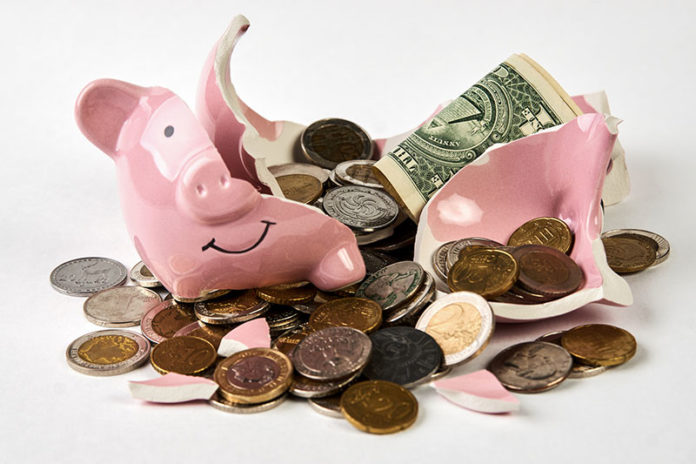The coronavirus pandemic has been a massively disruptive event, and one of the things it has upended is federal budget policy. Never has there been such a broad and fervent belief that, in this crisis, Washington should be spraying cash out of a fire hose. Right now, fiscal austerity is in quarantine.
Last month, a Republican president who once vowed to pay off the federal debt over eight years signed an emergency rescue package with a price tag of $2.2 trillion. That sum is about half as much in new spending as the federal government normally spends on everything in an entire year.
The legislation is the start of what is likely to be a cascade of outlays to offset the terrifying collapse of the U.S. economy. Speaker Nancy Pelosi says House Democrats are considering another spending bill that could “easily” exceed $1 trillion, and the administration is not inclined to impersonate Scrooge.
The drastic shift has many people on the left claiming that the previous constraints on budget policy were a fraud. If we can afford all this spending, the argument goes, why can’t we afford “Medicare for All,” the Green New Deal, free college and other ambitious initiatives?
“It’s a fascinating progressive moment because what it’s shown is that all of these issues have never been about ‘how are you going to pay for it?'” said Rep. Alexandria Ocasio-Cortez, D-N.Y., last month. “All of these excuses that we have been given as to why we cannot treat people humanely have suddenly gone up in smoke…”
But this is like thinking that because you laid out several thousand dollars to replace your broken furnace in the dead of winter, you can also add a whole new wing to the house.
Being forced to spend a large sum in a serious emergency, and even borrow to cover it, doesn’t mean you would be wise to give up living within your means.
Fighting the coronavirus and its economic consequences is akin to waging a war: The risks of spending too little are vastly greater than the risks of spending too much. The recent surge of outlays is aimed at preventing bigger costs later.
The cost of addressing this turmoil also looks like a bargain compared to the items on the progressive wish list. Bernie Sanders’ “Medicare for All” plan would cost the federal government an estimated $32 trillion over a decade. His Green New Deal plan would cost more than $16 trillion, by his estimate, though the actual price would probably be higher.
Forgiving all student loan debt and making public colleges free would be another $3 trillion.
You may notice two things here. First, each of these programs would cost more than the March stimulus bill — 15 times more, in the case of “Medicare for All.” Added together, they would demand more than $50 trillion.
The second thing is that unlike the stimulus, these programs (with the possible exception of student loan forgiveness) involve not one-time outlays but annual obligations that would be a permanent feature of the federal budget.
Congress can decide not to spend $2.2 trillion on economic stimulus next year. But once an entitlement such as “Medicare for All” is established, the option not to pay for it is off the table. And let’s not forget the inexorable tendency of entitlements to expand, not shrink.
“A one-time $2 trillion expense is quite different from adding $3 trillion to $5 trillion every year forever (and growing),” notes Brian Riedl, a budget analyst at the conservative Manhattan Institute. “It is basically impossible to tax that much, and that much borrowing each year would crash the economy.”
How are we paying for the coronavirus emergency? By borrowing trillions of dollars. Those loans will come on top of the large amounts we had already been adding to the federal debt — nearly $1 trillion last year, and $1.1 trillion that was projected for this year before the COVID-19 crisis arrived.
If progressives want to make the case for their agenda, they can’t simply shrug off the cost. They are obligated to demonstrate that there are plausible ways to pay for each component, that the value will exceed the expense, and that there are no more frugal ways to achieve the same purposes.
At the moment, it’s necessary to practice fiscal incontinence to avert economic catastrophe. But the moment won’t last forever, and neither should the incontinence.






























